Links to external sources may no longer work as intended. The content may not represent the latest thinking in this area or the Society’s current position on the topic.
Supercomputer modelling of advanced materials
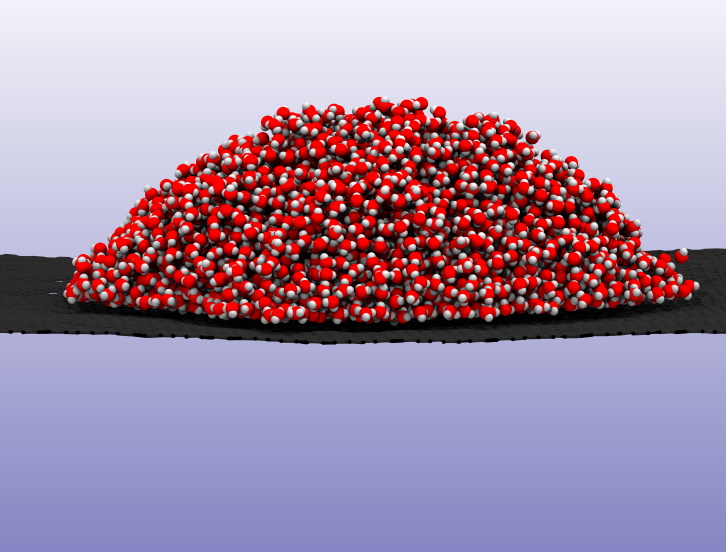
Scientific discussion meeting organised by Professor Scott Woodley, Professor Sir Richard Catlow FRS, Professor Nora H de Leeuw and Professor Angelos Michaelides FRS.
The development of advanced materials is of central importance in key scientific and industrial areas, including energy, catalysis and quantum technologies. High end computing and data science offer unprecedented opportunities for predictive modelling of complex materials. The meeting explored the scientific and methodological challenges in the field, focusing on structure prediction, nucleation and crystal growth, biomaterials and catalysis.
The schedule of talks and speaker biographies are available below. Speaker abstracts are also available below. An accompanying journal issue has been published in Philosophical Transactions of the Royal Society A.
Attending this event
This meeting has taken place.
Enquiries: contact the Scientific Programmes team.
Click watch on YouTube to view the full video playlist.
Organisers
Schedule
Chair
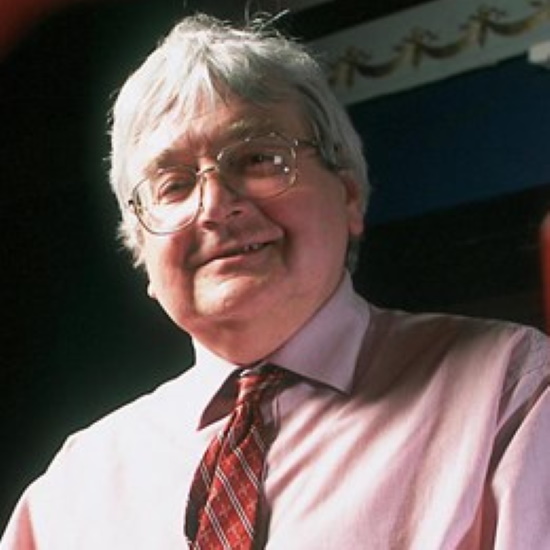
Sir Richard Catlow FRS, Cardiff University and University College London, UK

Sir Richard Catlow FRS, Cardiff University and University College London, UK
Richard Catlow is developing and applying computer models to solid state and materials chemistry: areas of chemistry that investigate the synthesis, structure and properties of materials in the solid phase. By combining his powerful computational methods with experiments, Richard has made considerable contributions to areas as diverse as catalysis and mineralogy. His approach has also advanced our understanding of how defects (missing or extra atoms) in the structure of solids can result in non-stoichiometric compounds. Such compounds have special electrical or chemical properties since their contributing elements are present in slightly different proportions to those predicted by chemical formula. Richard’s work has offered insight into mechanisms of industrial catalysts, especially involving microporous materials and metal oxides. In structural chemistry and mineralogy. Simulation methods are now routinely used to predict the structures of complex solids and silicates, respectively, thanks to Richard’s demonstrations of their power. Richard was Foreign Secretary of the Royal Society from 2016 until 2021. He has for many years been involved in the exploitation of High Performance Computing in Modelling Materials.
| 08:00 - 08:05 | Welcome |
|---|---|
| 08:05 - 08:35 |
Ab initio free energy simulations with chemical accuracy for molecule - surface interactions
Free energy simulations require (i) a method to calculate the potential energy surface (PES), and (ii) a method to sample the potential energy. The 'standard model of computational catalysis' uses (i) DFT with some account of dispersion, and (ii) local sampling using harmonic partition functions. For adsorption of alkanes in zeolite catalysts we show that chemically accurate (within ± 4 kJ/mol) results require going beyond the 'standard model' in both respects. The researchers use their hybrid QM:QM method1 to calculate MP2-quality PES, and they use MD in configuration space to sample the PES. They present a general local approach that uses hybrid QM:QM energies for stationary points, anharmonic partition functions for local sampling, and global sampling over a lattice of sites. For example, for adsorption of CO2, CH4, N2, CO, in metal-organic frameworks, chemically accurate free energies for adsorption on individual sites serve as input for Grand Canonical Monte Carlo lattice simulations.2 1J Sauer, Acc Chem Res 52 (2019) 3502. 2 A Kundu, K Sillar, J Sauer, Chem Sci 11 (2020) 643. 
Professor Joachim Sauer ForMemRS, Humboldt-Universität zu Berlin, Germany

Professor Joachim Sauer ForMemRS, Humboldt-Universität zu Berlin, GermanyJoachim Sauer received the Dr rer nat degree in Chemistry in 1974, and the Dr sc nat degree from the Academy of Sciences in (East-)Berlin in 1985. He is Senior Researcher at Humboldt University in Berlin where he was Professor of Theoretical Chemistry from 1993–2017. He is member of several academies including the German National Academy Leopoldina and he is Foreign Member of the Royal Society. He is known for development and applications of quantum chemical methods in surface science, adsorption and catalysis. He has published 400 research papers, notably in the area of modeling the structure and reactivity of transition metal oxides, zeolites and metal-organic frameworks, and he has given more than 500 invited lectures. Among other awards, he has received the Francis Gault Lectureship of the Federation of European Catalysis Societies and the Schrödinger medal of the World Association of Theoretical and Computational Chemists. |
| 08:35 - 08:45 | Discussion |
| 08:45 - 09:15 |
Modelling realistic nanoporous materials at operating conditions
Nanoporous materials used in catalysis, sorption, separations are far from perfect, they possess a broad range of heterogeneities in space and time extending over several orders of magnitude. Furthermore, their functional behaviour is largely determined by the conditions in which they do the work. Modelling realistic materials having defects, active sites at true operating conditions of temperature, pressure, etc poses a tremendous challenge. A typical modelling endeavour consists of various steps, with first construction of an atomistic model which is representative for the material. Within this respect, it needs to be emphasised that true crystals exhibit a broad range of spatial heterogeneities, ranging from the nanometer to the micrometer scale. Furthermore, realistic crystals have a finite size, with a certain morphology, which all affect their properties. Given this complexity construction of realistic molecular models for the materials is a challenge on its own. Second, one needs to select a method to determine the forces between the atoms and construct the potential energy surface. This level of theory largely determines the accessible length and time scales of current simulations. In principle one needs to use quantum mechanical methods however in this case length and time scales are restricted to the nanometer scale and molecular dynamics runs extend to a few hundreds of picoseconds, which are much too small to compare with experimental spatiotemporal windows. With classical force fields one can extend the accessible length and time scales, however one loses accuracy compared to the quantum description and the simple analytical potentials are not straightforward transferable to a broader range of thermodynamic conditions. With the fast evolution of machine learning potentials, a window of opportunity is created to simulate more realistic materials at longer length and time scales than currently accessible with accuracy comparable to the underlying quantum mechanical data from which the MLP is derived. Within this contribution, we highlight some of our recent results where we derived MLPs for nanoporous frameworks and applied the methods to describe reactive events in zeolites and to describe flexible behaviour within nanoporous materials. Finally, when having selected an appropriate level of theory to determine the PES, advanced sampling methods need to be used to efficiently explore all relevant regions of configuration space. Within Professor Van Speybroeck's group they have developed a series of methods to describe so-called rare events like reactive events, transport properties, phase transformation of nanoporous materials. Using the plethora of methods sketched above they will give some examples on how to model spatiotemporal processes in realistic nanostructured materials. Spatiotemporal processes refer to processes where the observed dynamics is entangled with the spatial heterogeneities within the material.1 Examples are taken from catalysis and diffusion within zeolites, phase transformations in metal-organic frameworks. [1] V Van Speybroeck, S Vandenhaute, AEJ Hoffman, SMJ Rogge, Trends in Chemistry 2021, 3 (8), 605-619. 
Professor Veronique Van Speybroeck, Ghent University, Belgium

Professor Veronique Van Speybroeck, Ghent University, BelgiumVeronique Van Speybroeck is full Professor at the Ghent University and Head of the Center for Molecular modeling, a multidisciplinary research center composed of about 40 researchers. She obtained her PhD in 2001 from the Ghent University. She is recipient of two flagship grants from the European Research Council: a Starting and Consolidator grant. Her expertise lies in first principle kinetics and molecular dynamics simulations of complex chemical transformations in nanoporous materials. The research is strongly driven by the ambition to model as close as possible realistic materials/processes. To this end, she is recently exploring methods to also model spatially extended nanostructured materials, including defects and other spatial heterogeneities. She has a record of significant contributions in the field of modeling nanoporous materials for catalysis, adsorption, eg zeolites, Metal-Organic Frameworks, Covalent Organic Frameworks; all applications are inspired and performed in close synergy with experimental groups. She is also an elected member of the Royal (Flemish) Academy for Science and the Arts of Belgium (KVAB). |
| 09:15 - 09:30 | Discussion |
| 09:30 - 10:00 | Coffee |
| 10:00 - 10:30 |
Operando Catalysis - a Challenge for Computational Discovery and Data-Driven Design

Professor Karsten Reuter, Fritz Haber Institute, Germany

Professor Karsten Reuter, Fritz Haber Institute, GermanyProfessor Karsten Reuter’s (b. 1970) research activities focus on a quantitative modeling of materials properties and functions. He specifically works on multiscale models that combine predictive-quality first-principles techniques with coarse-grained methodologies and machine learning to achieve microscopic insight into the processes in working catalysts and energy conversion devices. Karsten did his doctoral studies on theoretical surface physics in Erlangen, Madrid and Milwaukee. Following research experiences at the Fritz Haber Institute of the Max Planck Society (MPG) in Berlin and the FOM Institute in Amsterdam, he headed an independent MPG junior research group. From 2009 to 2020 he was Chair for Theoretical Chemistry at the Technical University of Munich (TUM), and has been appointed director of the Theory Department of the Fritz Haber Institute in 2020. He recently held Visiting Professorships at Stanford (2014), MIT (2018), and Imperial College London (2019), and is Coordinator of the Munich Cluster of Excellence e-conversion. |
| 10:30 - 10:45 | Discussion |
| 10:45 - 11:15 |
Multi-scale Modeling and Simulations of Structural Transitions in Smart Materials

Professor Umesh Waghmare, Jawaharlal Nehru Centre for Advanced Scientific Research, India

Professor Umesh Waghmare, Jawaharlal Nehru Centre for Advanced Scientific Research, India |
| 11:15 - 11:30 | Discussion |
Chair
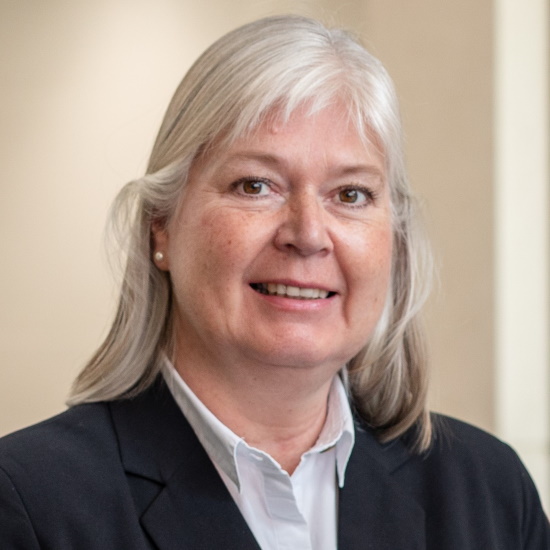
Professor Nora H de Leeuw, University of Leeds, UK

Professor Nora H de Leeuw, University of Leeds, UK
Nora de Leeuw is Professor of Computational Chemistry at the University of Leeds, UK, and she also holds a Chair position in Theoretical Geochemistry and Mineralogy at Utrecht University in the Netherlands. Her research is focused on the atomic-level understanding of composite materials and complex processes in biomedical applications and materials for sustainable energy applications, including novel catalysts for CO2 conversion to synthetic fuels, and materials relevant for nuclear energy, fuel cell and battery applications. Nora has held a number of independent research fellowships, including an EPSRC Advanced Research Fellowship (2002), Royal Society Wolfson Research Merit Award (2009), Royal Society Industry Fellowship (2012) and AWE William Penney Fellowship (2014). She is a Fellow of the Royal Society of Chemistry, elected Fellow of the Learned Society of Wales and elected Member of Academia Europaea.
| 12:30 - 13:00 |
Multiscale Modeling in Tissue Engineering and Cancer Scaffolds
Modeling innovations for biomaterials development is an emerging avenue for discovering next-generation materials for biomedical applications. This work presents the design of novel bone tissue engineered materials and scaffolds for large bone defects through multiscale modeling approaches bridging molecular-scale phenomena to the macroscale in polymer-clay-nanocomposites. Unique amino acid intercalations inside clay galleries guided by molecular dynamics and prediction of degradation and bone growth through mechanics-based modeling is utilised. The researchers also present the design of novel interlocking block systems for large bone defects using finite element modeling methods. Besides filling bone defects, these bone regenerating scaffolds are also used to develop cancer testbeds for prostate and breast cancer bone metastasis. Extensive experimentation of cellular responses and behaviors indicates the development of true in vitro models of bone metastasis. The testbeds are studied with commercial and patient-derived prostate and breast cancer cell lines. Modeling this complex system from adhesion proteins and cellular structural proteins to cells provides a quantitative view into the process of metastasis. Bone metastasis is the leading cause of death worldwide, with over 1 million fatalities due to breast cancer and prostate cancer. An estimated 178 million bone fractures were reported globally in 2019, and the US-CDC reports a global incidence rate for hip fracture to rise by 240% in women and 310% in men. Thus, the appropriate design of bone replacement materials is an important global issue. Innovations in modeling are likely to pave the way for positive outcomes for patients globally. 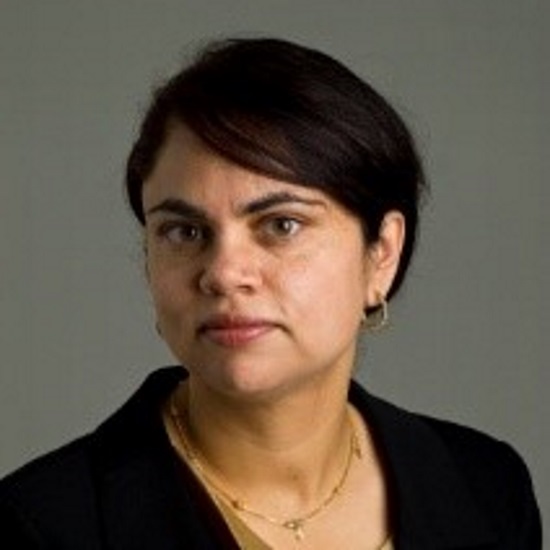
Dr Kalpana Katti, North Dakota State University, USA

Dr Kalpana Katti, North Dakota State University, USADr Kalpana Katti is a University Distinguished Professor at North Dakota State University. She leads the NDSU Center for Engineered Cancer Test-Beds (CECT) and also NSF EPSCoR Center for cellular Biointerfaces in Science and Engineering. She has published over 200 publications in Journals, conference proceedings and book chapters including 126 Journal articles. She is a NSF CAREER awardee, an elected Fellow of the American Institute for Medical and Biological Engineering (AIMBE) and recipient of the PhiKappaPhi lectureship. She has given over 70 invited, keynote and plenary lectures. Dr Katti’s primary area of research is in tissue engineering, cancer scaffolds and biomimetics. The Katti group has developed novel nanoclay based nanocomposites for biomedical applications by using nanoclays. She has also led multiscale modeling and experimental studies on biological nanocomposite systems such as seashells and bone. Her group has developed bone-mimetic scaffolds that create bone metastatic cancer testbeds. Her group has made important breakthroughs such as discovery of third-tier of hierarchy in collagen, and discovery of interlocking of platelets in nacre (in seashells). Dr Katti is actively involved in several professional societies and chairs many committees at MRS, TMS, Acers and ASCE-EMI. |
|---|---|
| 13:00 - 13:15 | Discussion |
| 13:15 - 13:45 |
From atomic units to astronomical units: multiscale modeling paradigms for unraveling the materials universe
Multiscale materials modeling (MMM) paradigms have attained a level of maturity such that they can be reliably implemented for the discovery, design, development, and deployment of advanced materials for a wide variety of engineering and technological applications. Of equal significance is their importance as an interrogation tool for interpreting the composition-microstructure-origin inter-relations of planetary materials. In this regard, Dr Muralidharan will discuss and demonstrate the predictive capabilities of MMM not just for development of advanced materials but also for providing important insights into fundamental processes that underlie planet formation in the solar system. Specifically using unified MMM frameworks, Dr Muralidharan will highlight the intrinsic commonalities that underpin (i) the mechanics of additively manufactured parts via the cold-spray process and the mechanics of planetary accretion; (ii) open system thermodynamics of planetary materials evolution and that of natural and synthetic biocomposites; (iii) interface mediated molecular interactions that control the chemo-mechanics of geopolymer-based cements and the role of surface chemistry on the origin and delivery of prebiotic organics in planetary materials and meteoritic samples. Lessons learned from these studies have profound implications not only for pushing the frontiers of materials science, but also for setting the stage for planetary exploration and for providing a deeper understanding of how life originated in our solar system. 
Dr Krishna Muralidharan, University of Arizona, USA

Dr Krishna Muralidharan, University of Arizona, USAKrishna Muralidharan is an Associate Professor in the department of Materials Science of Engineering at the University of Arizona, with joint appointments at the Lunar and Planetary Laboratory, and the Graduate Interdisciplinary Program in Applied Math. His research focuses on the development and implementation of integrated computational materials engineering paradigms to push the frontiers of additive manufacturing, multiscale energy storage systems, as well as biomaterials and planetary-materials analysis. Muralidharan joined the faculty ranks at the University of Arizona as an Assistant Professor in Materials Science and Engineering in 2010, after working at the Los Alamos National Laboratory, and the University of Florida. Muralidharan spearheads the Additive Manufacturing Initiative, and the Multiscale Modeling of Materials Laboratory at the University of Arizona. |
| 13:45 - 14:00 | Discussion |
| 14:00 - 14:30 | Tea |
| 14:30 - 15:00 |
Understanding structure-property relations in biological and bio-inspired molecular crystals from first principles
Molecular crystals are crystalline solids composed of molecules bound together by relatively weak intermolecular interactions, typically consisting of van der Waals interactions and/or hydrogen bonds. These crystals play an important role in many areas of science and engineering, ranging from biology and medicine to electronics and photovoltaics. Therefore, much effort has been dedicated to understanding their structure and properties. Here, Professor Kronik will focus on our recent progress in explaining and even predicting important classes of collective effects, ie, phenomena that the individual units comprising the crystal do not exhibit, but arise through their interaction. Specifically, Professor Kronik will demonstrate these concepts by addressing: (1) Unusual structure-function relations in biogenic molecular crystals; (2) Surprising mechanical properties of amino-acid based bio-inspired molecular crystals; (3) Unexpected magnetic and spintronic behavior in metal-organic crystals. Throughout, he will highlight the insights gained from a successful interaction between theory and experiment. 
Professor Leeor Kronik, Weizmann Institute of Science, Israel

Professor Leeor Kronik, Weizmann Institute of Science, IsraelProfessor Leeor Kronik directs the Beck Center for Advanced and Intelligent Materials at the Weizmann Institute of Science. He obtained his PhD at Tel Aviv University and was a Rothschild and Fulbright Post-doctoral Fellow at the University of Minnesota. His research interests are in developing density functional theory and in using it to understand and predict materials properties, with a current emphasis on organic and hybrid organic–inorganic solids and structures. He is a Fellow of the American Physical Society, and has recently received the Excellence in Research Award of the Israel Vacuum Society (2018), the Kimmel Award for Innovative Investigation (2021), and the Outstanding Scientist Award of the Israel Chemical Society (2021). |
| 15:00 - 15:15 | Discussion |
| 15:15 - 17:00 | Poster session |
Chair
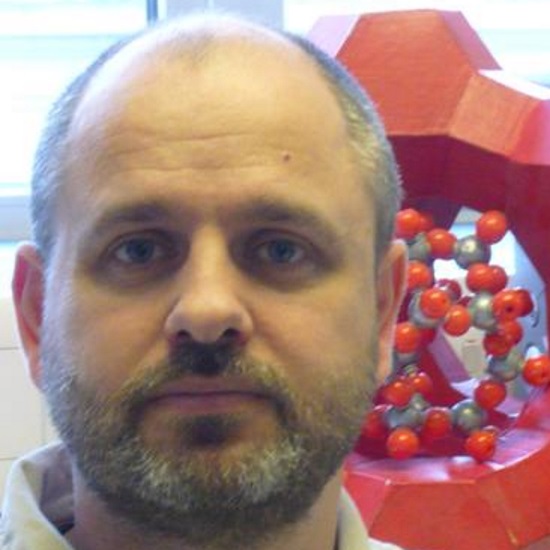
Professor Scott Woodley, University College London, UK

Professor Scott Woodley, University College London, UK
Scott Woodley is a Professor of Computational Chemistry and Physics with University College London, London, UK. He is the PI of two Design and Development Working Groups of the Excalibur Project - Materials and Molecular Modelling DDWG (EPSRC grant EP/V001507) and Particles At the eXascale on HPC (EP/W026775) - and co-I on two Excalibur crosscutting projects (EP/W00772X, EP/W007711). He leads UK's HEC Materials Chemistry Consortium (EP/R029431), and he is the Director of the Materials and Molecular Modelling Hub (one of UK's Tier-2 HPC centres; EP/L000202 and EP/T022213). He also led three EPSRC software development projects for materials modelling and structure prediction (EP/0022235, EP/K038958, EP/I03014X) and the lead creator of two web-based databases and tools, one for modelling nanoclusters and another for modelling surfaces.
| 08:00 - 08:30 |
Energy landscapes for predictive modelling of complex materials
The potential energy landscape provides a conceptual and computational framework for investigating structure, dynamics and thermodynamics in condensed matter and molecular science. This talk will summarise new approaches for global optimisation, calculating thermodynamic properties in systems exhibiting broken ergodicity, and rare event dynamics. Applications will be presented that exploit generalised basin-hopping for global optimisation in continuous and discrete metric spaces, with examples ranging from biomolecules tomachine learning and quantum computing. Design principles for self-assembly of mesoscopic structures extend the single funnel paradigm to multifunnel landscapes, with the potential for encoding multifunctional materials.
Selected Publications: DJ Wales, Annu Rev Phys Chem (2018) 69, 401 JA Joseph, K Röder, D Chakraborty, RG Mantell, and DJ Wales, Chem Comm 53, 6974, 2017. DJ Wales, Curr Op Struct Biol, 20, 3-10 (2010)DJ Wales, "Energy Landscapes", Cambridge University Press, Cambridge, 2003 
Professor David J Wales FRS, University of Cambridge, UK

Professor David J Wales FRS, University of Cambridge, UKDavid J Wales received his BA degree from Cambridge University in 1985 and his PhD in 1988 under the supervision of Professor AJ Stone. He was awarded the ScD degree in 2004. He spent 1989 as a Lindemann Trust Fellow at the University of Chicago, working with Professor RS Berry. He returned to a Research Fellowship at Downing College Cambridge in 1990, was a Lloyd's of London Tercentenary Fellow in 1991, and a Royal Society University Research Fellow from 1991 to 1998. In 1998 he was appointed to a Lectureship in Cambridge and is now Professor of Chemical Physics. He was awarded the Meldola Medal and Prize in 1992 by the Royal Society of Chemistry, and the Tilden Prize in 2015. He was a Baker Lecturer at Cornell University in 2005, and the Inaugural Henry Frank Lecturer at Pittsburgh University in 2007. His research primarily involves the exploration of potential energy landscapes, with applications to chemical biology, spectroscopy, clusters, solids and surfaces. |
|---|---|
| 08:30 - 08:45 | Discussion |
| 08:45 - 09:15 |
Structure prediction in low dimensions - concepts, issues and examples
New chemical materials and compounds serve as the foundation for the modern technology of our civilisation, where these materials should be environmentally friendly, with stable and controllable properties for a multitude of applications, and at the same time energy efficient in their synthesis. Traditionally, such materials are generated in bulk and then machined down to whatever size is needed. But such materials are also often grown in a bottom-up approach on a substrate, and in the extreme we are dealing with and aiming for low-dimensional systems with bespoke properties, where the stability of such materials often becomes an issue of concern. Among these systems, we find monolayers on surfaces or inside layered compounds, ultrathin films, nanotubes and nanowires, just to name a few, which are becoming increasingly important from a technological point of view. The ability to predict such kinetically stable and/or thermodynamically (meta)stable nanomaterials, followed by a computation of their properties and evaluation of their stability, is clearly of great value in their design and synthesis.[1] For the past three decades, the structure prediction of three-dimensional bulk crystalline compounds and their modifications[1,2] on the one hand, and of single atom clusters[3] and (bio)molecules[4] on the other hand, has shown great progress, and the computational approaches used are expected to be also applicable to low-dimensional systems.[5,6] In this presentation, Professor Schön will discuss the methodological features specific to the prediction of the latter systems,[7] together with examples of structure prediction for one-dimensional (eg, atom chains),[7] quasi-one-dimensional (eg, nanotubes),[7] two-dimensional (eg, monolayers),[5,8] quasi-two-dimensional (eg, layer-like building blocks for layered compounds),[9] and composite (eg, multi-molecule patterns on substrates)[10] systems.
[1] JC Schön, M Jansen, Angew. Chem Int Ed, 35:1286 (1996) 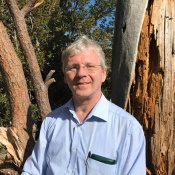
Professor J Christian Schoen, Max-Planck-Institute for Solid State Research, Germany

Professor J Christian Schoen, Max-Planck-Institute for Solid State Research, GermanyJ Christian Schön studied physics at Bonn University and at MIT, where he received his PhD in theoretical solid state physics in 1988. Subsequently, he was Postdoc in mathematics at SDSU in San Diego, in physics at the Universities of Odense and Copenhagen, and in chemistry at Bonn University, where he became apl Professor in 2008. He is a Fellow of the Royal Society of Chemistry. Since 1999, he has been a Senior Scientist at the Max Planck Institute for Solid State Research. His main research areas are the theory of complex multi-minima-energy landscapes and their application in chemistry, such as prediction and modeling of molecular structures and clusters in vacuum and on surfaces, of metastable crystalline and amorphous materials in 1 - 3 dimensions, and the simulation and optimisation of their synthesis, employing techniques from the area of global optimisation, MC and MD simulations, optimal control and finite-time thermodynamics. |
| 09:15 - 09:30 | Discussion |
| 09:30 - 10:00 | Coffee |
| 10:00 - 10:30 |
Using Machine Learning for Transition State Analysis: Applications for Ligand Unbinding Kinetics

Dr Edina Rosta, University College London, UK

Dr Edina Rosta, University College London, UKDr Edina Rosta is an Associate Professor in Computational Materials Modelling at UCL. After completing her PhD at USC in the group of Arieh Warshel (2013 Chemistry Nobel Prize Laureate), she joined the Hummer lab as a Postdoctoral Research Fellow at the NIDDK, NIH. She took up a lecturer position at KCL Chemistry in 2012. In 2020 she joined UCL Physics. Current research in her group focuses on atomistic molecular modeling, including hybrid quantum mechanics/molecular mechanics (QM/MM) simulations. To quantitatively and accurately assess how enzymes achieve their extraordinary efficiency and specificity in performing chemical reactions, she develops modern enhanced sampling methods including novel algorithms to calculate molecular kinetics from biased molecular simulations using the theoretical framework of kinetic networks. Applications of her work focus on the most prominent chemical reactions of living organisms: phosphate transfer and cleavage. She studies the key functional roles of Mg2+ cofactors in phosphate catalytic reactions. |
| 10:30 - 10:45 | Discussion |
| 10:45 - 11:15 |
From Gomberg to graphene and beyond: new multifunctional 2D materials based on persistent radicals

Professor Stefan Bromley, ICREA / University of Barcelona, Spain

Professor Stefan Bromley, ICREA / University of Barcelona, Spain |
| 11:15 - 11:30 | Discussion |
Chair
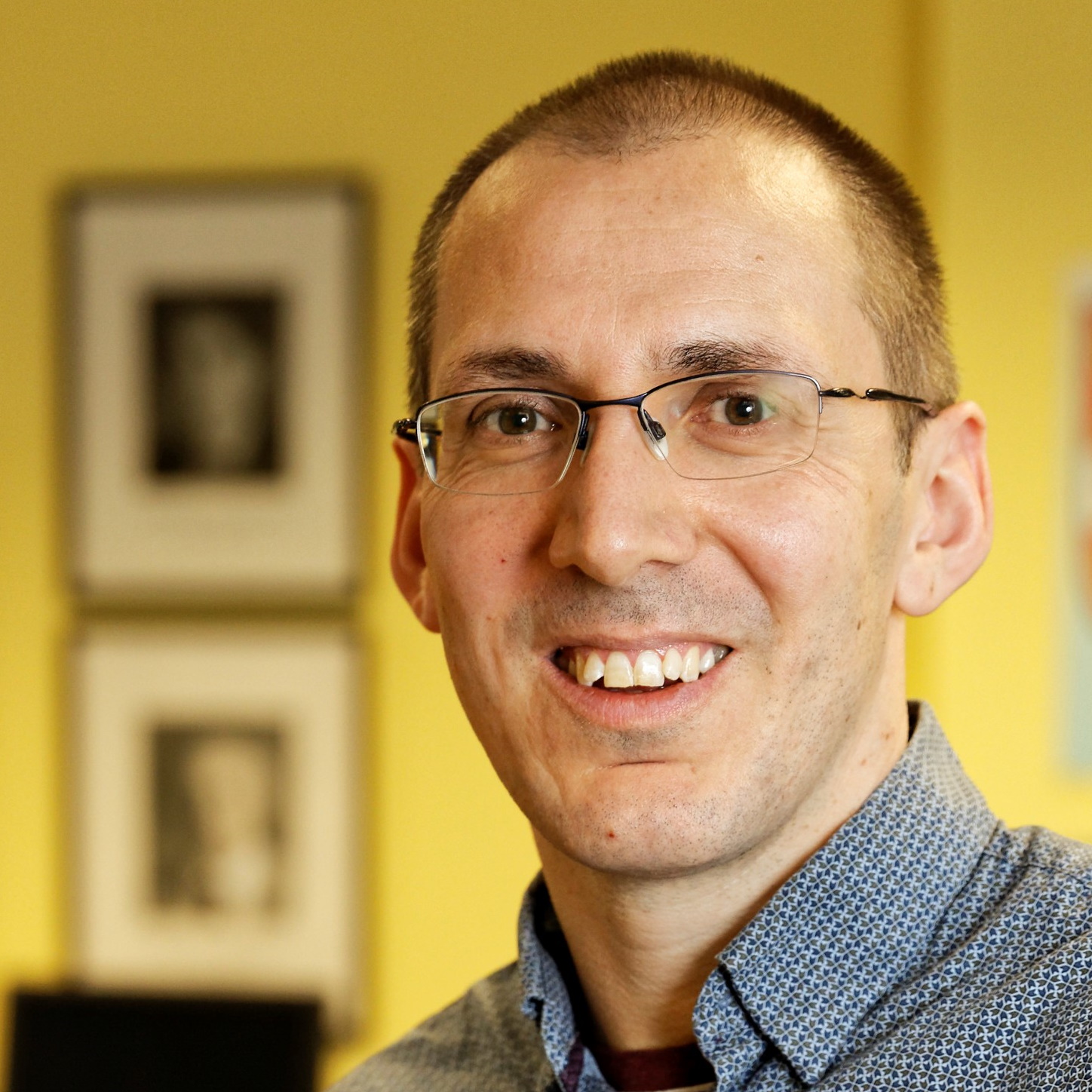
Professor Angelos Michaelides FRS, University of Cambridge, UK

Professor Angelos Michaelides FRS, University of Cambridge, UK
Angelos Michaelides obtained a PhD in Theoretical Chemistry in 2000 from The Queen's University of Belfast. Following this, he worked as a Post-doctoral Research Associate and Junior Research Fellow at the University of Cambridge and then at the Fritz Haber Institute, Berlin as an Alexander von Humboldt Research Fellow and subsequently Research Group Leader. Between 2006 and 2020 he was at University College London where he was Director and Co-Director of the Thomas Young Centre: The London Centre for the Theory and Simulation of Materials and the founding Director of the Materials and Molecular Modelling Hub. Since 2020 he has been the 1968 Professor of Chemistry at the University of Cambridge.
| 12:30 - 13:00 |
Structural and dynamical heterogeneity of nucleation precursors: Controlling polymorph selection and nucleation efficiency
Controlling the formation of specific polymorphs during crystallisation is of great interest in the design of materials with specific properties. However, the initial stages of nucleation and growth during solidification are still not fully understood, even for seemingly simple systems such as unary metals. Using transition path sampling, the researchers have studied the microscopic mechanisms during homogeneous nucleation in nickel. Their analysis of the path ensemble reveals that the emergence of the crystalline phase is preceded by the formation of pre-structured regions in the liquid that act as precursors. Extending their study to heterogeneous nucleation, they likewise observe a precursor-mediated crystallisation mechanism. Small seeds impact the structural characteristics of the liquid and induce the formation of precursors with specific structural hallmarks. The nucleating ability and polymorph selectivity of these templates is, therefore, not simply given by lattice mismatch and translational order but strongly linked to the seed’s ability to promote the formation of suitable precursors in the liquid. Furthermore, they have analysed the dynamical heterogeneity in the liquid which is revealed to play a key role in the nucleation mechanism. Crystallisation occurs preferentially in regions of low mobility in the supercooled liquid. These low mobility regions form before and spatially overlap with the regions of structural precursors, revealing a clear link between dynamical and structural heterogeneity in the liquid. The relationship between structural and dynamical heterogeneity in the liquid and the nucleation mechanism appears to be key in controlling essential parameters during crystallisation, including nucleation rates and polymorph selectivity. 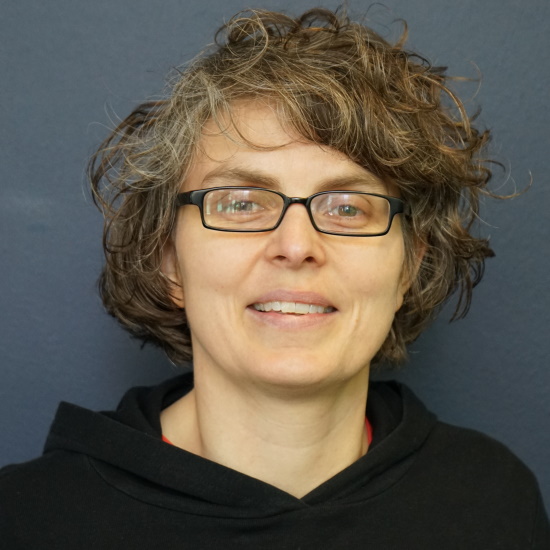
Dr Jutta Rogal, New York University, USA

Dr Jutta Rogal, New York University, USAJutta Rogal is currently a Heisenberg Fellow of the German Research Foundation with a research appointment at the Department of Chemistry at New York University (NYU) and the Department of Physics at Freie Universität Berlin (FUB). She received her doctorate from FUB in 2006, carrying out her PhD work on electronic structure calculations for surface catalysis at the Fritz Haber Institute. For her PhD thesis, she was awarded the Otto Hahn Medal of the Max Planck Society and the Ernst-Reuter Preis of the FUB. In 2007, Jutta moved to the University of Amsterdam as a Postdoctoral Researcher to develop methodological extensions to the transition path sampling approach, before joining the Interdisciplinary Centre for Advanced Materials Simulation at the Ruhr University Bochum as Group Leader from 2009-2020. In 2016, she was awarded a Feodor Lynen Research Fellowship of the Alexander von Humboldt Foundation which she spent at NYU in 2017/18 working on enhanced sampling techniques for high-dimensional energy landscapes. |
|---|---|
| 13:00 - 13:15 | Discussion |
| 13:15 - 13:45 |
Toward the rational design of novel cryoprotectants: the long and weary computational road
The delivery of the next generation of medical treatments such as regenerative medicine hinges on our ability to store biological material. Cryopreservation - that is, the process of freezing biological material whilst retaining its function - is our best bet to achieve that, but the state-of-the-art suffers from a number of crippling limitations. One such limitation is the rather scanty portfolio of cryoprotectants available to us: these compounds are added into the mix so as to control the formation of ice in biological matter and thus mitigate the many detrimental effects caused to cells and tissues by the growth of ice crystals. We need more effective, safer, less toxic, cheaper cryoprotectants - and yet, in the last few decades we have failed to design any valid alternative to the very few compounds (glycerol being a prominent example) that we have more or less serendipitously discovered in the by now distant past. This is because we lack the molecular-level understanding of how exactly cryoprotectants work. In this talk, Dr Sosso will present some recent advances specific to the mechanism of ice re-crystallisation inhibition agents, ie compounds that limit the growth of ice crystals - one of the many aspects that a cryoprotectant can act upon. In particular, Dr Sosso will discuss the picture emerging from our findings in terms of the ice re-crystallisation inhibition activity of selected polymers, peptides and surprisingly small molecules as well. Whilst the ultimate goal of achieving the rational design of novel cryoprotectants might still be beyond our grasp, molecular simulations are playing an important part in getting us all there - and, the further we progress, the greater the computational demands that we will need to meet. 
Dr Gabriele C Sosso, University of Warwick, UK

Dr Gabriele C Sosso, University of Warwick, UKGabriele C Sosso is an Associate Professor in Computational Physical Chemistry at the University of Warwick. He obtained his PhD in Nanostructures and Nanotechnologies from the University of Milano-Bicocca (Italy) in 2012, under the supervision of Professor Marco Bernasconi. He has worked as a PostDoctoral Research Associate with Professor Michele Parrinello at ETH Zürich and with Professor Angelos Michaelides at UCL. Gabriele is a computational scientist, chiefly interested in the physical chemistry of condensed matter, from supercooled liquids to biological interfaces. His vision is to understand the functional properties and the phase transitions of different classes of systems, from metallic glasses to cellular membranes. His approach consists in performing fundamental research using computer simulations, aimed at rationalise, complement and guide experiments and applications. Particularly relevant in the context of this meeting is Gabriele’s work on crystal nucleation and growth, which encompasses large-scale, machine learning-based simulations of semiconducting materials as well as enhanced sampling simulations of water freezing into ice at complex interfaces. |
| 13:45 - 14:00 | Discussion |
| 14:00 - 14:30 | Tea |
| 14:30 - 15:00 |
The challenge of obtaining meaningful free energies for ion binding at surfaces from solution
Ion binding at surfaces from solution is an important process in a variety of contexts from geochemistry through to the crystallisation of materials. Therefore, knowledge of the thermodynamics of such events is vital for predicting how systems will grow or dissolve under a set of conditions. With the advent of supercomputers and enhanced sampling methods, the determination of free energies for such adsorption processes is becoming increasingly possible, even for water where solvent exchange rates can be slow on the molecular dynamics timescale. Although numerous examples of solid-solution ion transfer can already be found in the literature, especially based on pathway-driven techniques, such as metadynamics or umbrella sampling, this presentation will examine the question of whether such information is actually meaningful or useful in the form often given? To explore the above question, this talk will focus on the widely studied example of NaCl growth from aqueous solution. Specifically, Professor Gale will consider the free energies of the kink sites relative to aqueous solution, as the correctness of the thermodynamics can be readily checked via the bulk solubility. By comparing the free energies of these sites as determined by a range of approaches, including pathway or alchemical techniques, it will be shown that wildly varying answers can be arrived at. However, after careful correction for all relevant simulation factors, such as system size and state, it will be shown that consistent and valid results can be reached by both alchemy and pathway-based methods. 
Professor Julian Gale, Curtin University, Australia

Professor Julian Gale, Curtin University, AustraliaProfessor Julian Gale obtained his first degree from the University of Oxford in Natural Sciences (Chemistry), where he continued on to study for a DPhil in the Department of Chemical Crystallography. After a postdoctoral position at the Royal Institution of Great Britain he moved to Imperial College London as a Royal Society University Research Fellow and subsequently Reader in Theoretical and Computational Chemistry. In 2003, he moved to his current location, Curtin University, as a Premier’s Research Fellow and now holds the position of John Curtin Distinguished Professor of Computational Chemistry. Recently he was awarded an Australian Research Council Laureate Fellowship and is a Fellow of the Australian Academy of Science. Research interests include the development and application of computational techniques to problems in areas including materials chemistry, crystallisation, geochemistry and mineralogy. |
| 15:00 - 15:15 | Discussion |
| 15:15 - 15:00 | Panel discussion |
